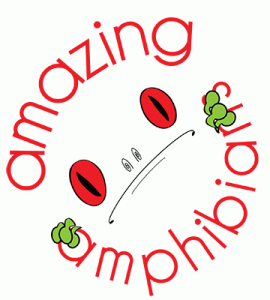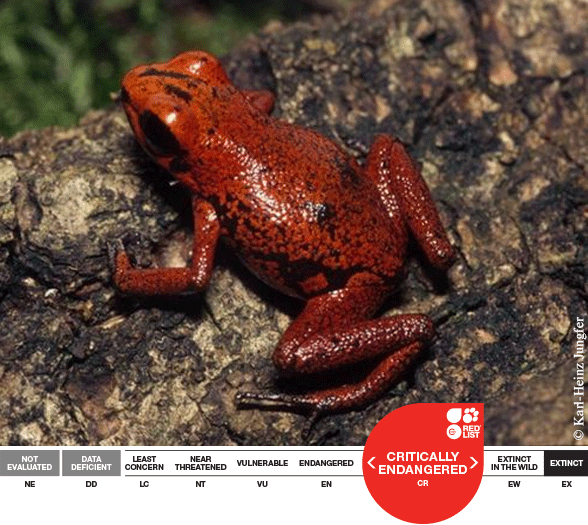 The Demonic Poison Frog (or Yapacana’s Little Red Frog), Minyobates steyermarki, is listed as ‘Critically Endangered’ on the IUCN Red List of Threatened SpeciesTM. Its range in humid montane forest habitats on the Cerro Yapacana in southern Venezuela is probably less than 10km². This small species, like other Poison Dart Frogs, is known for being highly toxic, a feature they obtain through their diet. The Demonic Poison Frog can be easily found in bromeliad plants.
The Demonic Poison Frog (or Yapacana’s Little Red Frog), Minyobates steyermarki, is listed as ‘Critically Endangered’ on the IUCN Red List of Threatened SpeciesTM. Its range in humid montane forest habitats on the Cerro Yapacana in southern Venezuela is probably less than 10km². This small species, like other Poison Dart Frogs, is known for being highly toxic, a feature they obtain through their diet. The Demonic Poison Frog can be easily found in bromeliad plants.
 |
The Demonic Poison Frog is under major threat from the destruction and degradation of its habitat through open cast or open pit gold mining and its associated pollution and fires, with additional habitat loss resulting from wildfires. It is also under threat from over-collection by the pet trade.
The Demonic Poison Frog is listed on Appendix II of CITES, meaning that trade in this species is strictly regulated. Furthermore, Cerro Yapacana is a Venezuelan Natural Monument, which may offer some protection to the species.
Submit your observations of this species to iNaturalist and they will appear on this map. Learn more about this species on Amphibiaweb.
More Amazing Amphibians here.
Produced in partnership with:
 |
||
 |
 |
 |
 |
 |
 |
How to become an Amazing Amphibians partner:
Outlined below are the roles and responsibilities for the 4 different levels of involvement for potential partners. If your organization would like to be a part of the Amazing Amphibians program in either of these capacities please email amazing@amphibians.org.
Senior Partner – These partners will help with multiple aspects of the program, help facilitate the completion of several species profiles, publicize each Amazing Amphibian and will likely have a landing page for the program on their website. This level of partner will be leading in using their communication channels to gather additional information for the program such as images and data points for iNaturalist.
Strategic Partner – These partners will play an active role in creating species profiles, submitting at least three species profiles per year and actively use their social network to publicize each Amazing Amphibian. This level of partner will be active in using their communication channels to gather additional information for the program such as images and data points for iNaturalist.
Focal Partner – Partners tend to be active in a limited geographic area. This partner will submit at least one regional species profile per year and use their social network to publicize each Amazing Amphibian. This level of partner will be involved in using their communication channels to gather additional information at a regional level for the program such as images and data points for iNaturalist.
Affiliate – These partners are interested in promoting the program but might not be in a position to provide profiles. These partners will publicize each Amazing Amphibian through the social media outlets.







